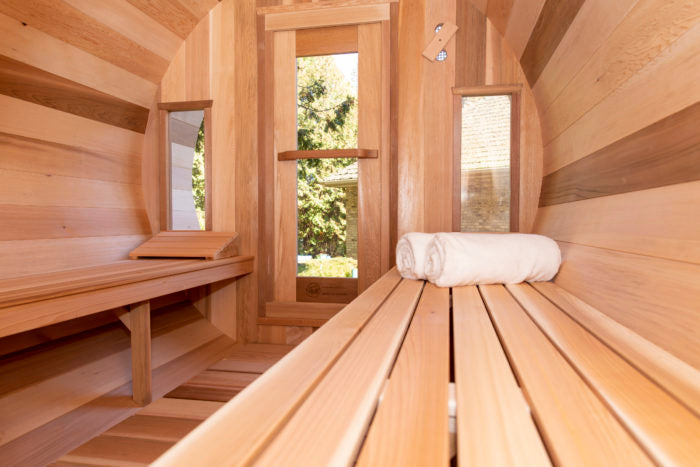Some Known Details About Traditional Sauna
Some Known Details About Traditional Sauna
Blog Article
Traditional Sauna - An Overview
Table of ContentsTraditional Sauna Fundamentals ExplainedThe Ultimate Guide To Traditional SaunaAn Unbiased View of Traditional SaunaTraditional Sauna - An OverviewThe smart Trick of Traditional Sauna That Nobody is Talking About
A lot of the weight lost in a sauna is water loss and is re-gained upon rehydrating. Nevertheless, undeniably sauna can be a crucial part of a healthy fat burning program. To look at the distinctions in between conventional and IR saunas, I will certainly divide these into verifiable, academic, and fabricated differences.Hence, the best point in the saunawhich is at the ceiling straight above the sauna heateris typically between 185 and 190 F. Claims that a conventional sauna surpasses 200 F is merely not true and not relevant for electrical saunas marketed in the United States. The temperature for a far-infrared sauna is usually set in between 120 and 140 F; however, unlike the standard sauna, the goal in and IR space is not to achieve a high temperature.
As a result of this, the temperature difference is practically pointless, given that excessive sweating leads to both sauna types, however the technique of heating up the body is different. In an IR sauna the bather will feel hot and will certainly sweat profusely, but at much reduced temperature levels (Traditional Sauna). Therefore, if the objective is to invest longer durations of time in the sauna, the IR sauna is a great choice
When a typical sauna has actually been effectively heated up, the sauna wall surfaces are warm, the air temperature level has attained established temperature and the rocks are super heated. As an interesting side note, the heated wall surfaces and the rocks are releasing far-infrared heat, integrated with the warmed air, to develop an "covering warmth".
Traditional Sauna Things To Know Before You Buy

When the heat is achieved, the components cycle on and off to preserve the heat. Most typical sauna customers delight in pouring water over the rocks to create steam to increase sauna humidity levels. The advantages of putting water over the rocks include: making the area more comfy, moistening the nasal flows, and enabling the use of aromatherapy by blending crucial oils with the water.

When the power enters the body, it creates the body temperature to raise and ultimately causes perspiration. In an infrared sauna it is necessary for the emitters/heaters to stay on practically continuously. Given that there is no mass of rocks to maintain warmth, the sauna will cool down if the emitters turned off.
As mentioned above, the sauna bather in an infrared area wants to position himself before running emitters to obtain optimal gain from the heat. The heating time for both spaces can be official source really various, depending upon exactly how the rooms are made use of. For a typical sauna, a bather must allow 30-40 mins for the room to achieve a desired temperature level and to appropriately pre-heat the rocks.
See This Report about Traditional Sauna
A well constructed sauna will typically accomplish a temperature of 150-160 F in concerning 30-40 minutes. For hotter temperature levels, the area may need to warm for a longer duration.

Conventional saunas tend to be bigger (therefore use even more power) than infrared saunas, although traditional saunas are certainly available in one and two person dimensions also. For a two-person conventional sauna, 5x6 or 5x7 dimension is most preferred. The top bench can comfortably seat 2 or 3 people and is likewise long enough to rest during the sauna session.
Some Known Facts About Traditional Sauna.
The average price per kWH of electricity in the U.S. is around $0.11, so a 4.5 kW heating system will set you back about $.50 to run for one hour, if the heater runs constantly for one hour. Generally a sauna heater will certainly run for 75% of the very first hour and 50% of succeeding hours on since the elements cycle once the established temperature level is accomplished.

Finally, there is a hardly ever talked about difference in the social experience between both spaces. While our society has lost some of the social benefit of the conventional sauna experience, it can be very socially satisfying (Traditional Sauna). From family time in the sauna, to heart-felt conversations with loved ones, to sauna partiesthe standard sauna experience can bring about intimate interacting socially
Rumored Buzz on Traditional Sauna
The majority of higher end infrared rooms consist of colored light therapy, noise systems and full-glass fronts. find out here The dimension of the majority of rooms enable 2 individuals to easily use the area, while some styles might enable a third or 4th individual to make use of the room. Customized infrared rooms are additionally available, with space sizes available up to 7' x 8' x 7' high.
Report this page